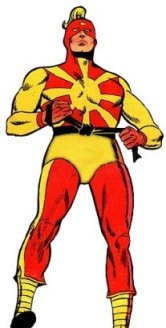


I wish I had these ACE paperbacks. They were published without permission back in the 60's when Tolkien's popularity was beginning to crest. I've long thought that Jack Gaughan's artwork on these was vivid and compelling.
For my own part, I first read of Middle Earth under these "official" Ballantine covers by artist Barbara Remington. Here's an interview with Remington about how these peculiar but rather strangely pretty covers came to exist. My first trip there and back again was pretty lush and like most folks I suspect, I like to revisit from time to time.



For the record, I first became aware of something called "Lord of the Rings" in high school, where the beautiful slipcase hardback trilogy rested atop some bookshelves. Alas this was a zone from which this treasure could not be retrieved to be actually read, but had to be seen only from afar or with the assistance of the librarian. I remember that classic eye symbol staring out at me, but it would be a few years before I could answer that call.
This week, with only a few more precious days left before I have to confront the rigors of the high school student mind again, I'm taking some time to luxuriate in Peter Jackson's epic films, viewing the extended DVD versions.
Seeing this work on the big screen was a big thrill of course, but getting to see it in the comfort of my home is exquisite. The extended story in these adds to the understanding of the whole significantly.
There are weaknesses in the movies of course, that's inevitable, but overall I find this translation of the epic to pretty darned impressive, capturing the scope of the original pretty well.
Rip Off

The Ace books weren't "without permission".
ReplyDeleteTo quote the Tolkien Society page at http://www.tolkiensociety.org/tolkien/tale.html
Ace Books were exploiting a copyright loophole which meant they did not have to pay Tolkien or his publishers any royalties. Houghton Mifflin appears to have imported too many copies, and the notice they contain, 'Printed in Great Britain' meant that the texts were deemed to be in the public domain in the United States.
There was a mail campaign against Ace, who, as a result, agreed to pay royalties, and not to print any more copies.
But, as a result of being advised that he had lost his copyright, Tolkien began to revise The Lord of the Rings, so that there could be an authorised paperback which would be a new edition for which he would still own the copyright.
People call them "pirate" editions, and that's the common misconception.